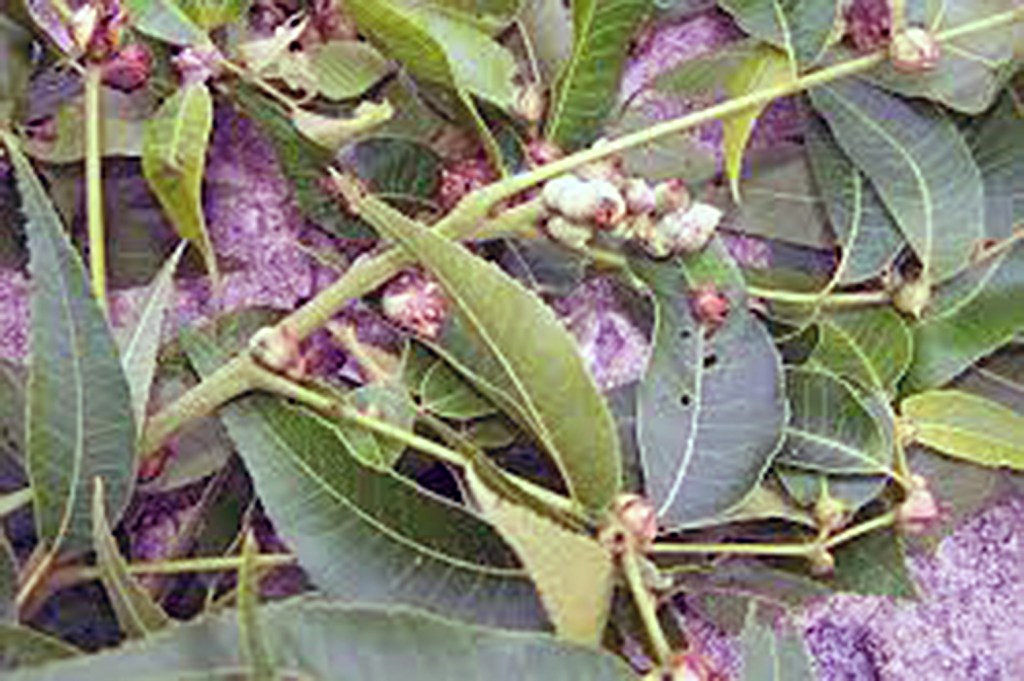THE GARDEN SPOT: Phylloxera of pecans
Published 12:00 pm Saturday, June 2, 2018

- Pecan phylloxera spend the winter as tiny eggs in cracks or crevices of pecan tree bark. Eggs normally start hatching early in April, about the time of bud break.
Many homeowners take pride in what that old pecan tree out back produces, and folks love to share the harvest after a bumper crop.
Pecans are not only commercially grown, but they are also backyard grown. However, the difference between growing pecans commercially versus growing them in the backyard is quite a bit different.
Trending
The most significant difference between the two is commercial pecan growers can actually manage pests with spray programs. Pecans are susceptible to many different pests including insects as well as disease.
Every year about this time, the Extension office gets several calls and visits from clients who have problems with their pecan trees. Clients will tell us their pecan trees have these blisters or bumps on the leaves and stems. Some mention that they’ve never seen anything like it before.
Truth be told, the first time you see it, it is quite interesting looking. What clients are describing is the work of an insect call a pecan phylloxera. These aphid-like insects are nothing new as they have been around for many years. Many people have not seen them before because of their cyclical nature.
There are two species in the southeast that typically cause damage to pecans. Southern pecan leaf phylloxera, as its name suggests. causes damage to the leaves. Although the galls look unsightly all over a mature pecan tree it is purely cosmetic damage.
The second of the two phylloxera species is much more damaging to the tree and pecan crop. The stem phylloxera can cause damage to the nut crop, and weaken small branches which could break under windy conditions.
Phylloxera spend the winter as tiny eggs in cracks or crevices of pecan tree bark. Eggs normally start hatching early in April, about the time of bud break. As these newly hatched nymphs feed on stem and leaf tissue, they cause gall tissue to form around themselves. Once protected, they mature inside the gall and lay more eggs. The galls normally split open in the latter part of May.
Trending
A note to anxious pecan tree owners: By the time the galls appear in spring, damage is already done and it’s too late to treat.
Once constructed, the galls can’t be removed. Even if you were able to take off every one, it wouldn’t do any good.
Prevention is the key to controlling pecan phylloxera. Control for commercial growers is fairly simple as insecticides are sprayed throughout an orchard to kill the initial generation of the pest. Challenges for homeowners lie in the lack of effective insecticides labeled for home growers, and having a tank sprayer capable of reaching areas of new growth in the tree, especially mature, i.e. large, pecan trees.
Homeowners don’t usually have access to a bucket truck. Probably the ideal piece of equipment for getting to those hard to reach places.
Homeowners should refrain from wasting time and money spraying your pecan tree after the galls have formed as insecticidal sprays won’t do any good at that point. Understand that even pecan trees displaying significant phylloxera damage this year will more than likely recover in subsequent years.
Some homeowners threaten to cut down their pecan trees thinking they’ll be dealing with phylloxera damage every year, but that is not the case. Give your pecan tree the chance to produce pecans next year before hiring a chainsaw, and if you are considering planting a pecan tree, choose a variety that is less likely to develop insect or disease problems.
For a lower-maintenance pecan try Candy, Elliot, Farley or Jenkins. Although the nuts may be a little smaller than commercial varieties, they usually perform much better over the long haul.
— For information on topics related to the home and garden, contact any office of the Alabama Cooperative Extension System. The Limestone County Office is located at 1109 W. Market St. in Athens. Office hours are 8 a.m.-4:30 p.m. Monday through Friday. For more information, call 256-232-5510 or visit www.aces.edu.





